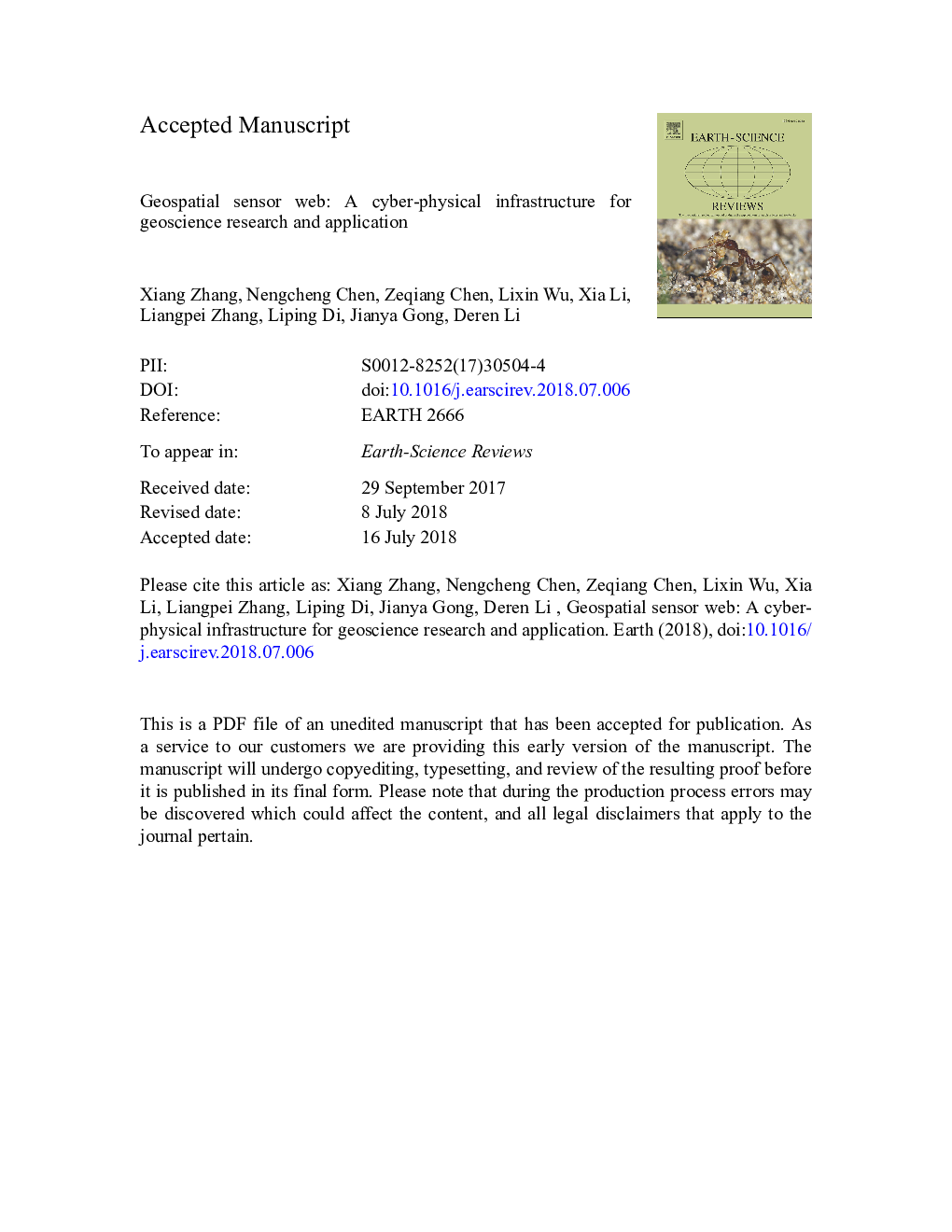| Article ID | Journal | Published Year | Pages | File Type |
|---|---|---|---|---|
| 8912902 | Earth-Science Reviews | 2018 | 53 Pages |
Abstract
In the last half-century, geoscience research has advanced due to multidisciplinary technologies, among which Information and Communication Technology (ICT) has played a vital role. However, scientifically organizing these ICTs toward improving geoscience measurements, data processing, and information services has encountered tremendous challenges. This paper reviews a profound revolution in geoscience that has resulted from the Geospatial Sensor Web (GSW), serving as a new cyber-physical spatio-temporal information infrastructure for geoscience on the World Wide Web (WWW). In contrast to previous experiment-based and sensor-based paradigms, the GSW-based paradigm is able to accomplish the following: (1) achieve integrated and sharable management of diverse sensing resources, (2) obtain real-time or near real-time and spatiotemporal continuous data, (3) conduct interoperable and online geoscience data processing and analysis, and (4) provide focusing services with web-based geoscience information and knowledge. As a benefit of the GSW, increasingly more geoscience disciplines are enjoying the value of real-time data, multi-source monitoring, online processing, and intelligence services. This paper reviews the evolution of geoscience research paradigm to demonstrate the scientific background of GSW. Then, we elaborates on four key methods provided by GSW, namely, integrated management, collaborative observation, scalable processing and fusion, and focusing service web capacity. Furthermore, current GSW prototypes and applications for environmental, hydrological, and natural disaster analysis are also reviewed. Moreover, four challenges to the future GSW in geoscience research are identified and analyzed, including integration with the Model Web initiative for sophisticated geo-processing, integration with humans for pervasive sensing, integration with Internet of Things (IoT) to achieve high-quality performance and data mining, and integration with Artificial Intelligence (AI) to provide smart geoservices. We have concluded that GSW has become an indispensable cyber-physical infrastructure, and will play a greater role in geoscience research and application.
Related Topics
Physical Sciences and Engineering
Earth and Planetary Sciences
Geology
Authors
Xiang Zhang, Nengcheng Chen, Zeqiang Chen, Lixin Wu, Xia Li, Liangpei Zhang, Liping Di, Jianya Gong, Deren Li,
